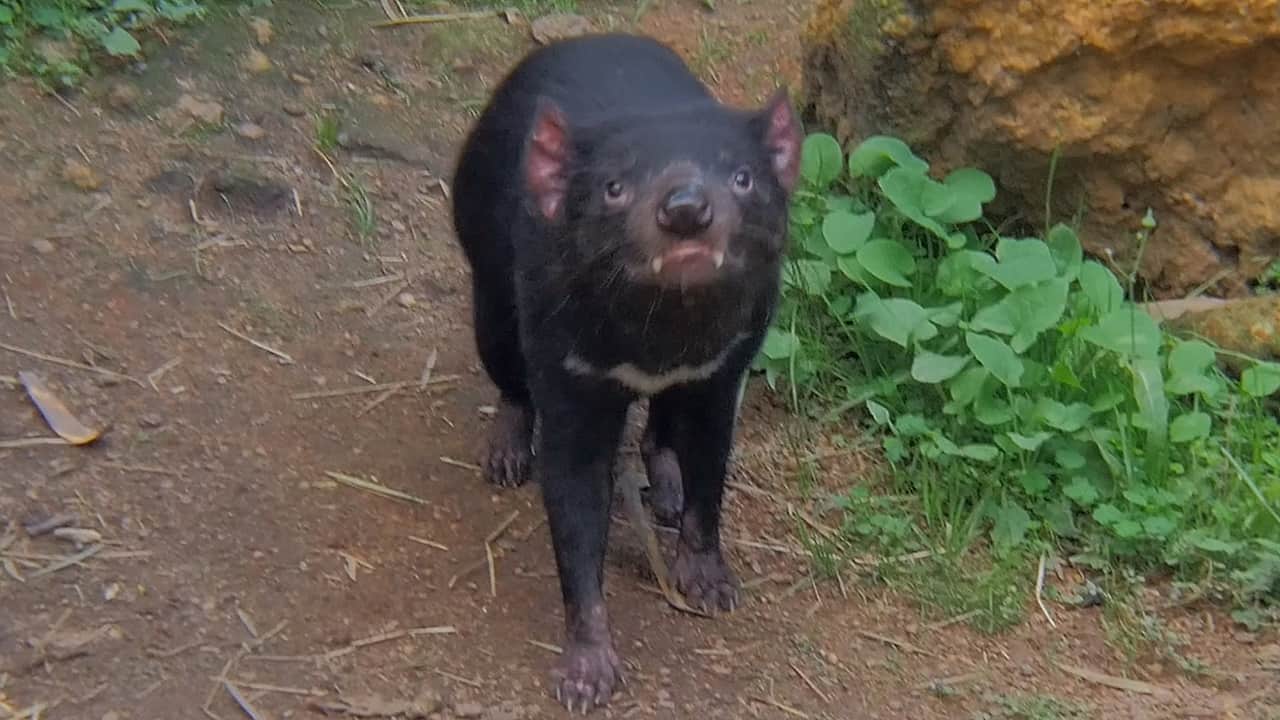Tasmanian Devil & Various Animals Caversham Wildlife Park
Loading Video...
Tasmanian Devil & Various Animals Caversham Wildlife Park
The Tasmanian Devil is solitary, but not territorial and although individuals may have home ranges of 10 to 20 ha, they usually overlap considerably. They tend to move throughout the nighttime in search of food, and when food is scarce have been known to travel up to 16km during dusk and dawn. They generally retire in a hollow log, cave or burrow, emerging at night to feed. The Tasmanian Devil is a meat-eater, like a dog, but its jaw is much more powerful. It has a locking jaw with a bite that is approx 3 times stronger than most dogs. Tassie Devils have a top speed of approx. 13km p/h which can make hunting difficult, so they tend to feed off carrion, such as wallabies, kangaroos and wombats. They hunt insects, birds, small mammals such as possums and are good at fishing from streams. Being a marsupial, females have a pouch which is rear-facing. She breeds once per year and has a gestation period of 31 days. 2-4 joeys will remain in the pouch for 4 months. They are independent at 7 months. Mortality is high in the first year of independent life. IUCN Red List Conservation Status – Endangered (upgraded from vulnerable in 2008). The decline is largely attributed to The Devil Facial Tumor Disease (DFTD) which was identified in 1996. It is a fatal disease, characterized by cancers around the mouth and head. It is unusual cancer, in that it can be contagious; it is spread between individuals through biting.
Caversham Wildlife Park introduces visitors to the unique selection of wildlife in Western Australia, from iconic native species to farm animals and rich birdlife.
Tasmanian Devil & Various Animals Caversham Wildlife Park
Tasmanian devils Facts
Tasmanian devils are now found only on the island state of Tasmania. Their Tasmanian range encompasses the entire island, although they are partial to coastal scrublands and forests. Biologists speculate that their extinction on the mainland about 400 years ago may be linked to the introduction of domestic dogs or dingoes.
Tasmanian devils are very temperament and have a reputation for flying into a rage even against each other when threatened by a predator, fighting for a mate, or defending a meal. Early European settlers dubbed them “ The Devils” after witnessing displays such as teeth-baring, lunging, and an array of spine-chilling guttural growls. These behaviours also inspired the Looney Tunes portrayal of Tazie, the Tasmanian devil, as a snarling lunatic.
But this reputation might not be totally ok. Though the Tasmanian devil may seem aggressive, many of these behaviours are related to feeding rituals or fear-induced.
About Caversham Wildlife Park
David and Pat own and operate Caversham Wildlife Park with their son David & daughter Debbie.
When they purchased the park in 1988, the park housed a small collection of animals and birds on a modest 5 acre (2ha) property. A few years later, the park doubled in size, when the family purchased the adjoining property and the collection started to boom. In May 2003, the family designed and built a new park in Whiteman Park, once again, more than doubling in size.

0 Comments Be First to Comment